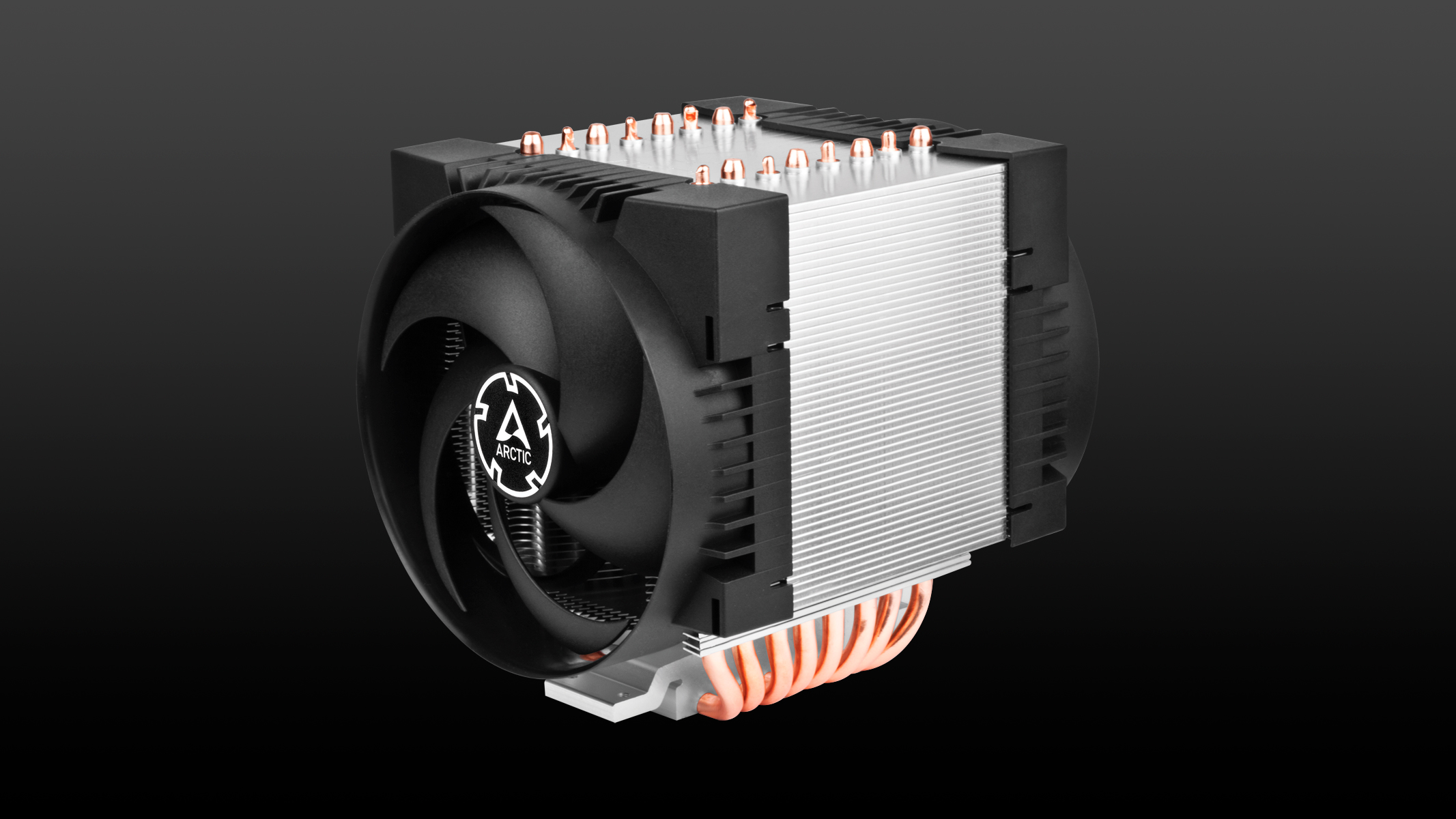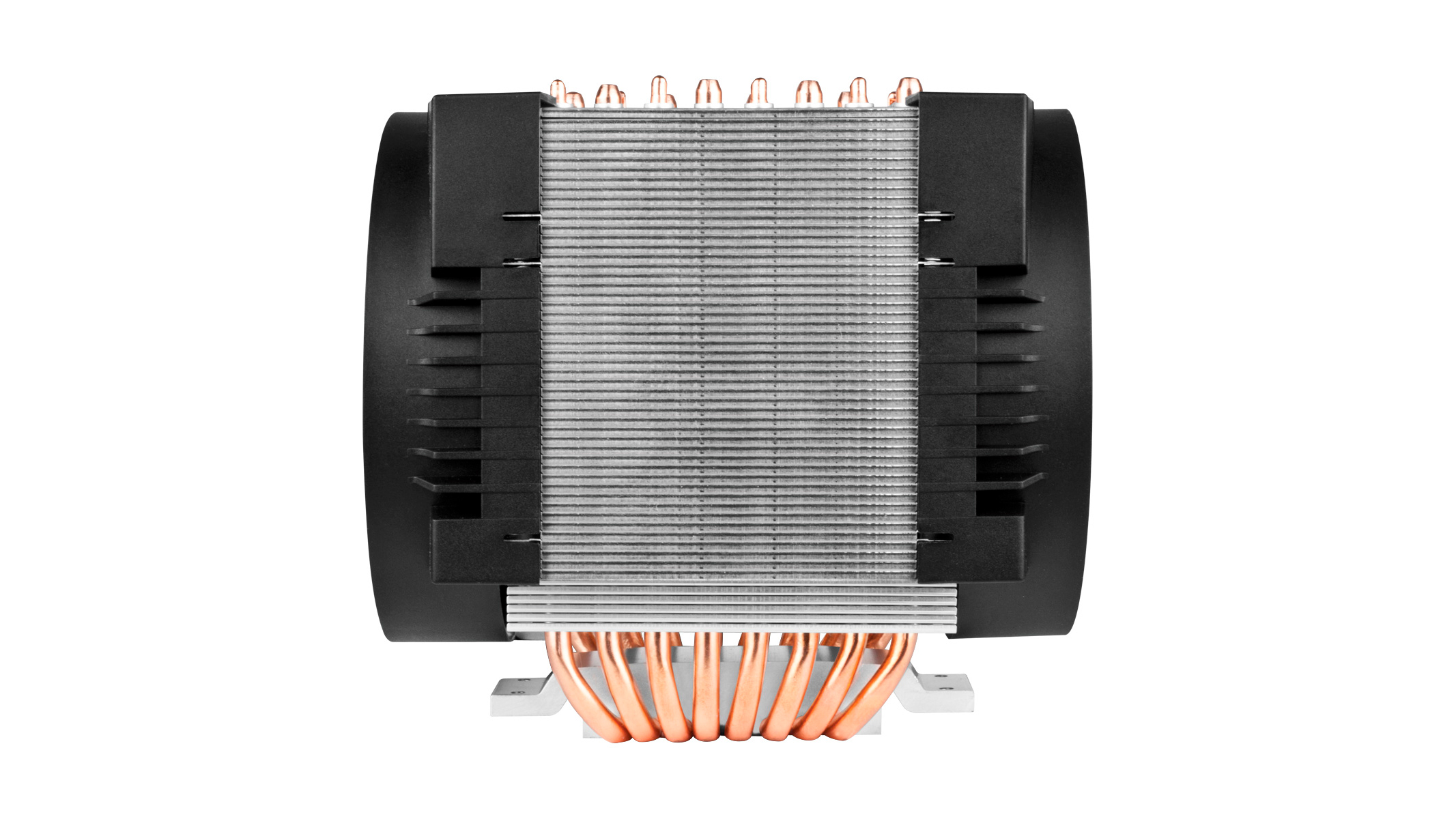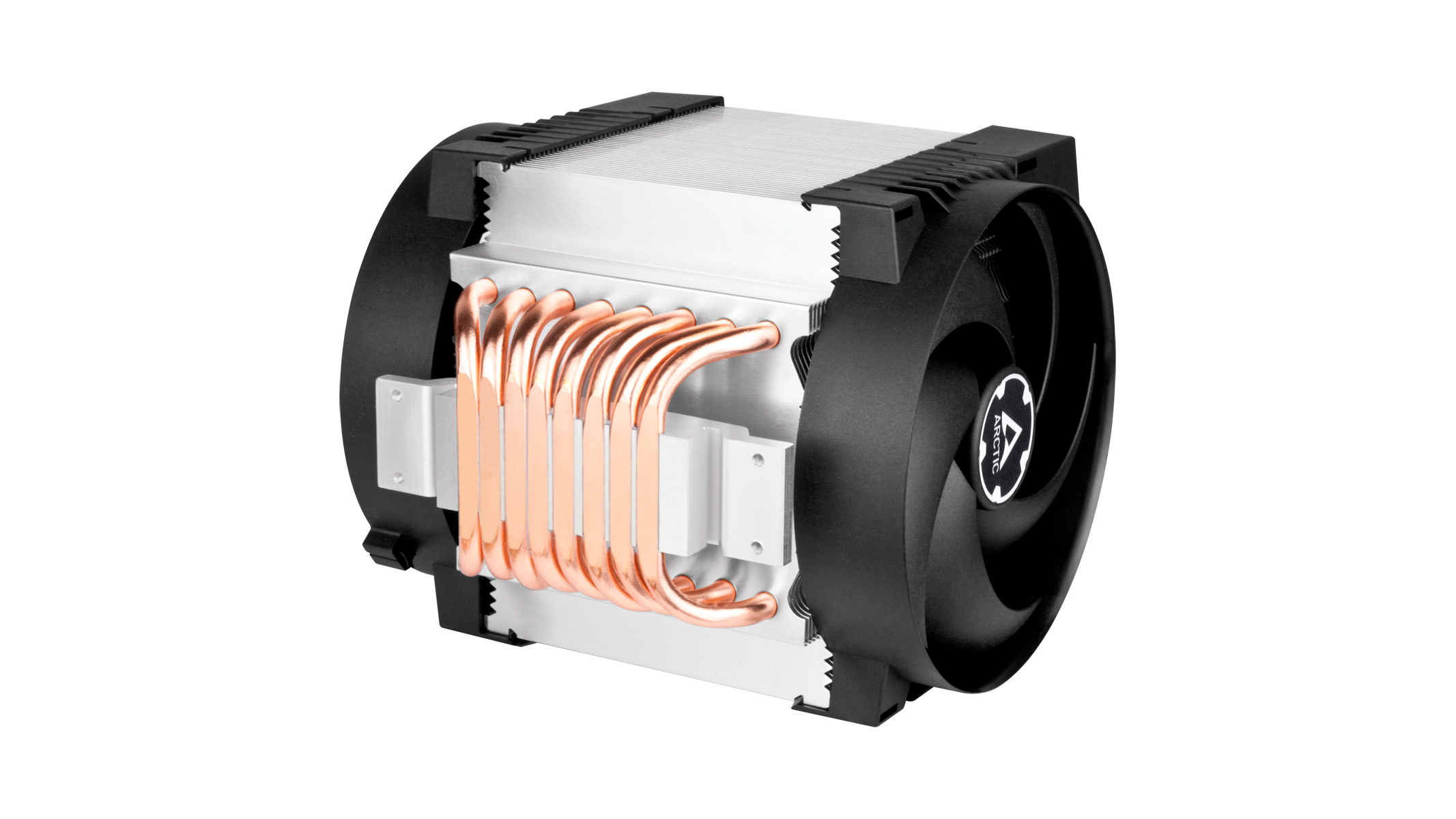Arctic Launches Massive CPU Cooler for EPYC, Threadripper, Xeon CPUs

The Freezer 4U-M, the new addition to Arctic's product portfolio, can handle AMD Ryzen Threadripper, EPYC, and Intel Xeon chips with a TDP of 350W. Given its qualified specifications, the Freezer 4U-M rivals some of the best CPU coolers currently on the market.
In all fairness, the Freezer 4U-M isn't an entirely new CPU cooler. Instead, the Freezer 4U-M is, in essence, a revised version of the now-discontinued Freezer 4U SP3. The Freezer 4U SP3 was a CPU cooler designed for AMD's SP3, TR4, and sTRX4 sockets. The Freezer 4U-M still supports the three platforms mentioned above but adds other sockets, including LGA4189, LGA4677, SP6, sTR5, and sWRX8, to the list. So, if you're looking for a competent CPU air cooler for your new Xeon Sapphire Rapids or one of the upcoming Ryzen Threadripper 7000WX processors, the Freezer 4U-M has you covered. Surprisingly, the Freezer 4U-M doesn't support the AMD SP5 socket, which is the home for the EPYC Genoa, Bergamo, and Turin lineups.
The Freezer 4U-M measures 4.9 x 6.1 x 5.7 inches (124 x 156 x 145mm), making it one of the most oversized CPU air coolers. The single-tower design suits a dual-socket configuration, and the cooler fits inside 4U cases. There are 2.1 inches (53mm) of clearance space for memory modules, which should be plenty since server memory doesn't have tall heat spreaders with flashy RGB lighting. The Freezer 4U-M has eight copper heat pipes with a diameter of 6mm that transfer heat from the baseplate to the heatsink. The fin density on the heatsink is pretty good, with 57 aluminum fins. However, that's two less than the Freezer 4U SP3. The Freezer 4U-M is algo 0.5 ounces (13g) lighter than the Freezer 4U SP3.




Arctic equips the Freezer 4U-M with two 120mm PWM cooling fans in a push-pull configuration for maximum thermal dissipation. The fans feature dual-ball bearings that are great for continuous periods of operation and are less susceptible to contamination and wear in environments with high temperatures. The fans spin between 400 to 2,300 RPM with a noise level of 40 dBA.
The cooling performance for the fan isn't listed on the Freezer 4U-M's product page. Assuming that these 120mm fans are the same as the ones on the Freezer 4U SP3, they should deliver an airflow and static pressure of 71.9 CFM (122.16 m³/h) and 3.3 mmH2O, respectively. The power consumption for each fan is 0.12A or 1.44W. Therefore, the maximum power draw on the Freezer 4U-M with the twin-fan setup is 2.88W.
The Freezer 4U SP3 came with a syringe of Arctic's MX-5 thermal compound, one of the best thermal pastes you can buy. However, the new Freezer 4U-M arrives with the latest MX-6. Regarding generation-over-generation uplift, Arctic claims that the MX-6 attains 20% better thermal performance than the ever-popular MX-5.
Arctic sells the Freezer 4U-M for $70.99 on Amazon. The new CPU air cooler is $10 more expensive than the Freezer 4U SP3, which used to retail for an average price of $59.76.
Get Tom's Hardware's best news and in-depth reviews, straight to your inbox.

Zhiye Liu is a news editor, memory reviewer, and SSD tester at Tom’s Hardware. Although he loves everything that’s hardware, he has a soft spot for CPUs, GPUs, and RAM.
-
bit_user It seems even that still isn't the ultimate. Unlike this heatsink, Cooler Master has "Continuous Direct Touch Technology", where they can bunch up the heatpipes without any gaps in between.Reply
350 W sounds impressive, until you realize that GPUs eat such amounts of cooling for breakfast. -
Amdlova Where is the vapor chamber ??? Cooler master did one cooler with it the TPC-812. I think it will be better than those little 6mm heat pipes.Reply -
bit_user Reply
I'm a big fan of vapor chambers. However, it's worth considering that server CPUs have a lot of chiplet area and the cores in those chiplets are running at lower clock speeds. So, that should mean there's not as big of a problem with hot-spots as you have with desktop CPUs, and therefore less need to rely on something like a vapor chamber to distribute the heat.Amdlova said:Where is the vapor chamber ??? Cooler master did one cooler with it the TPC-812. I think it will be better than those little 6mm heat pipes.
The issue server CPUs have is that they are producing increasing amounts of heat, especially as core counts continue to climb. So, the real focus is more on effectively transferring that heat to the air. That's why it needs so many heatpipes and such a big fin stack. -
DaveLTX Reply
Vapor chambers actually arent any better than heat pipes on CPUs because of how spread out they areAmdlova said:Where is the vapor chamber ??? Cooler master did one cooler with it the TPC-812. I think it will be better than those little 6mm heat pipes.
Small area sure they definitely make a big difference but air coolers weren't very advanced back then and the TPC812 wasn't particularly outstanding even then
Also reminder blower cards use vapor chambers and they're not exactly quiet!
Actually being spread out more would work to it's advantage better herebit_user said:It seems even that still isn't the ultimate. Unlike this heatsink, Cooler Master has "Continuous Direct Touch Technology", where they can bunch up the heatpipes without any gaps in between.
350 W sounds impressive, until you realize that GPUs eat such amounts of cooling for breakfast.
But it probably would do them better to solder on a base plate
The biggest advancements we have had is the shift to tighter fins that are squeezed on the heatsink.
Although that still does have its issue mainly that after time the heat cycles tend to loosen up a old cooler and they lose their efficacy down the road.
Yes, only a few if not any high end air coolers are still soldered. The dissimilar materials are increasing thermal resistance and was a band aid to loose fitting fins a decade ago -
ilukey77 id like to see this cooler for regular Cpu's to so a real challenge for the d15 or assassin iv !!Reply -
DaveLTX Reply
Pointless. The extra number of heatpipes only serves as nothing and is just extra restriction.ilukey77 said:id like to see this cooler for regular Cpu's to so a real challenge for the d15 or assassin iv !!
Deadweight essentially
A dual tower would be better as well -
ilukey77 Reply
i dont know the heat pipes between the Noctua NH-U12s and the deep cool ak500 digital surely makes a big difference not the fin stack as the deepcool fin stack is far bigger but doesnt cool as well so i would say the more heat pipes the better heat dissipationDaveLTX said:Pointless. The extra number of heatpipes only serves as nothing and is just extra restriction.
Deadweight essentially
A dual tower would be better as well -
DaveLTX Reply
No. More heat pipes beyond a certain point does not make a heatsink any better.ilukey77 said:i dont know the heat pipes between the Noctua NH-U12s and the deep cool ak500 digital surely makes a big difference not the fin stack as the deepcool fin stack is far bigger but doesnt cool as well so i would say the more heat pipes the better heat dissipation -
bit_user Reply
Vapor chambers would make a lot of sense, if you use them like laptops or GPUs do, where it's used in place of a solid heat spreader. AMD reportedly even experimented with using them as the heat spreader for the Ryzen 7000 series!DaveLTX said:Vapor chambers actually arent any better than heat pipes on CPUs because of how spread out they are
If you're talking about GPUs, a lot of axial-fan graphics cards use vapor chambers, also. That's much more akin to what we're talking about, because a tower CPU cooler needs to use a vapor chamber + heatpipes, just like axial-fan graphics cards. The point of the vapor chamber is then simply to spread out the heat so you don't have a situation where only a couple of the heatpipes are in contact with the hot spot(s).DaveLTX said:Also reminder blower cards use vapor chambers and they're not exactly quiet!
No... having more heatpipes that are packed with no gaps is the best case scenario. The downside is how many heat pipes you'd need to cover such a large CPU.DaveLTX said:Actually being spread out more would work to it's advantage better here
Source?DaveLTX said:More heat pipes beyond a certain point does not make a heatsink any better.
The main thing is to get heat pipes over the hot spots. Once you've done that, I'd agree that you probably start to hit a point of diminishing returns.